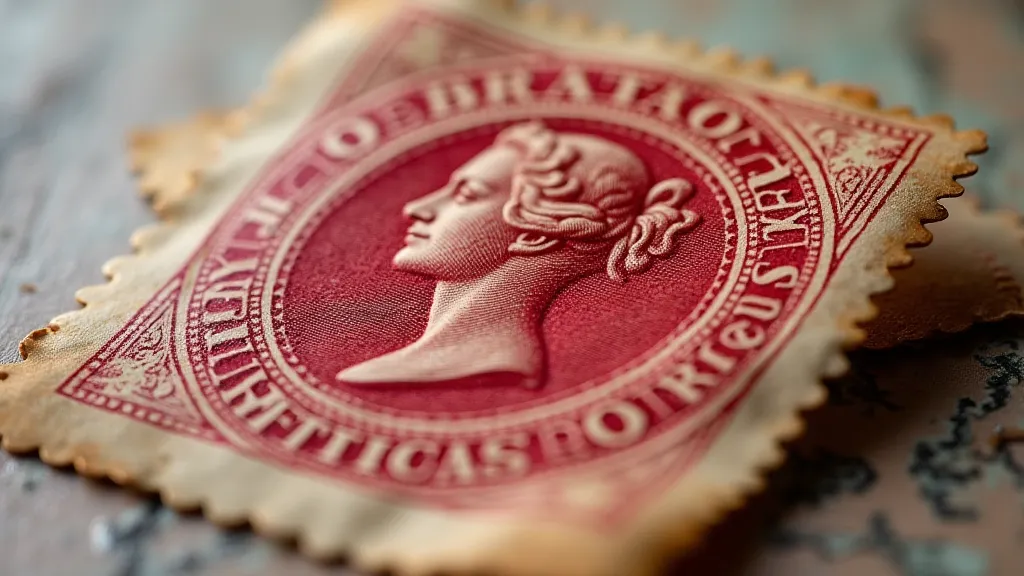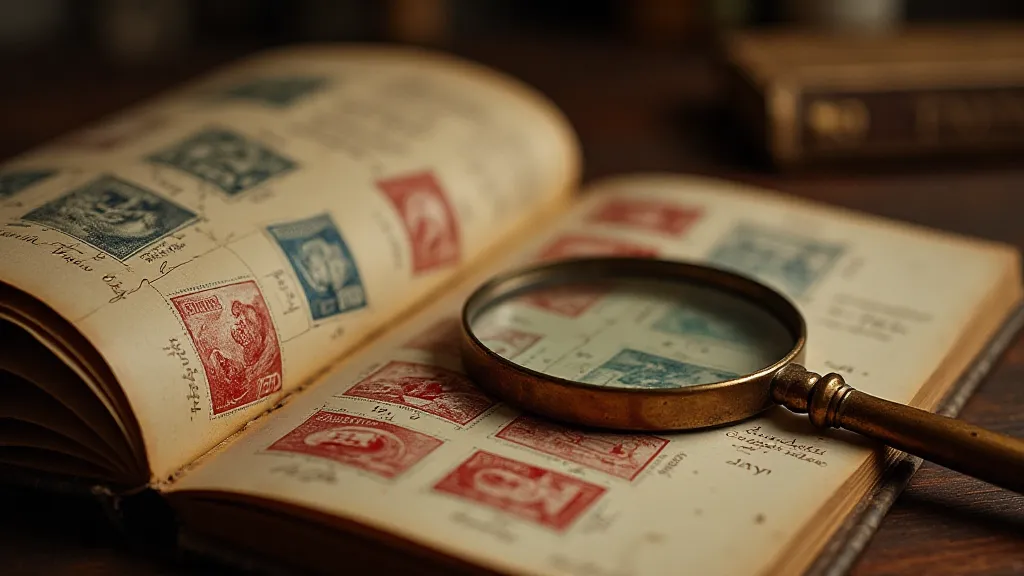Crimson Threads: The Alchemy of Color in Early Stamp Design
The world of philately, of collecting stamps, is so much more than the simple acquisition of perforated paper. It's a journey through history, art, and cultural identity, all compressed into squares and rectangles that once carried missives across continents. And within that journey, the color of these miniature artworks holds a particular resonance, a silent testament to the aspirations and sensibilities of a bygone era. Today, we’re focusing on a hue that appears frequently and powerfully in early stamp designs: crimson, and its close relation, vermillion. More than just aesthetics, these choices represent an alchemy – a blending of symbolic weight, artistic influence, and the burgeoning concept of national branding.
My own fascination with vintage stamps began, as many do, with a family heirloom – a dusty album passed down from my grandfather. While he was primarily interested in the technical aspects – perforation counts, watermarks, printing methods – I was captivated by the images, the colors, and the stories they whispered. I remember being particularly drawn to a block of Mauritius "Post Office" stamps, their deep red a striking contrast to the faded sepia tones of the rest of the album. That initial spark ignited a lifelong pursuit of understanding not just *what* these stamps were, but *why* they were as they were.
The Symbolic Weight of Crimson
Crimson, a shade derived from the vibrant red pigment historically obtained from kermes insects (a scale insect that infests oak trees), has long been associated with royalty, power, and sacrifice. Its connection to the color red itself is undeniable; red has been a color of importance for millennia, representing vitality, passion, and in many cultures, war and courage. When nations began utilizing postage stamps in the mid-19th century – a time of nascent national identities and expanding empires – these connotations weren’t lost. Choosing crimson was a conscious decision, a declaration of national strength and imperial ambition.
Consider the early British Empire stamps. The Penny Black, the world’s first adhesive postage stamp, and its subsequent siblings often utilized red inks. While other colors were employed, red consistently signaled the power and reach of the Crown. It wasn’t merely about conveying a message; it was about projecting an image of unwavering authority. Similarly, stamps from France often incorporated vermillion, a brilliant red pigment derived from cinnabar, also carrying similar associations of prestige and national pride.

Artistic Influences and Engraving Techniques
The choice of crimson and vermillion wasn't solely dictated by symbolism. The available pigments and printing techniques significantly influenced design. Early stamps were almost exclusively produced using engraved plates – incredibly intricate designs etched into metal and then inked. The quality of the engraving and the skill of the color printer were paramount. The rich, saturated tones achievable with crimson and vermillion were particularly appealing to engravers, allowing them to showcase their artistry and create visually striking designs.
The challenge, of course, was consistency. Early printing methods were far from perfect. Variations in ink density, paper quality, and even the humidity of the workshop could lead to subtle, yet noticeable, differences in color. This variation, however, is precisely what collectors prize today. A stamp with a particularly vibrant or unusual shade – a "variety" – can be significantly more valuable than its more common counterparts. It's a reminder of the human element involved in the creation of these seemingly mass-produced items.
Evolving National Branding
As the 19th century progressed, the function of postage stamps began to evolve beyond mere conveyance of mail. They became potent tools for national advertising, miniature ambassadors representing a nation's values, achievements, and aspirations to the wider world. The colors used became increasingly deliberate, intended to evoke specific emotions and associations. While crimson and vermillion remained prominent, other colors started to gain traction – blues representing trustworthiness and stability, greens symbolizing prosperity and agriculture, and yellows signifying optimism and innovation.
The shift wasn't abrupt. Early stamp designs often blended traditional symbolism with emerging trends. A stamp might feature a portrait of a reigning monarch rendered in crimson, but also incorporate elements of a nation's flora or fauna, subtly conveying a sense of national identity beyond just regal power. The evolution reflects a growing awareness of the power of visual communication and the importance of crafting a positive national image.

Preservation and Appreciation
Collecting vintage stamps isn't just about accumulating pieces of paper; it's about preserving a tangible link to the past. Proper storage and handling are crucial for maintaining the integrity of these delicate artifacts. Acid-free albums and stock books are essential for preventing deterioration. Exposure to sunlight and moisture should be minimized. And, perhaps most importantly, stamps should be handled with care, avoiding unnecessary contact with fingers.
For those interested in restoration – a controversial topic in philately – the guiding principle should always be preservation, not alteration. Minor cleaning can sometimes be undertaken by experienced conservators, but any attempt at repainting or recreating missing features is generally frowned upon by serious collectors. The authenticity and originality of a stamp are paramount.
A Crimson Legacy
The enduring appeal of vintage stamps lies in their ability to transport us to another time and place. The crimson threads woven into the fabric of early stamp designs speak of ambition, artistry, and the nascent concept of national identity. These miniature masterpieces are more than just pieces of paper; they are windows into a world long gone, reminding us of the power of color, design, and the enduring legacy of human ingenuity. The subtle differences in shade, the delicate engravings, the faint watermark – these are the details that captivate collectors and spark a lifelong passion for the world of philately.






